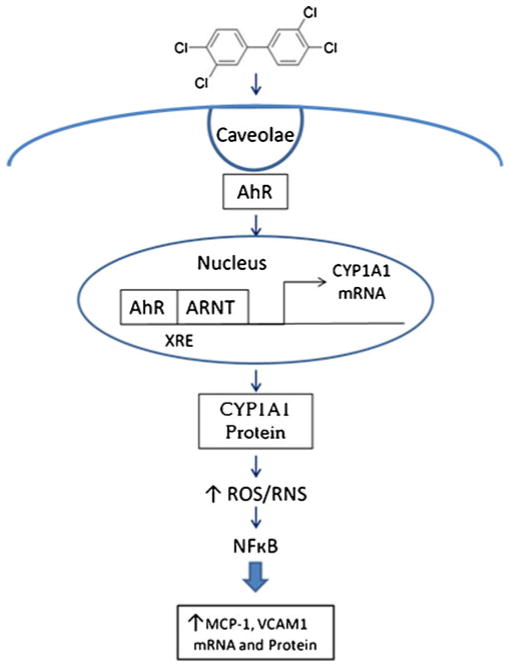Fig. 5.
PCB 77 increases ROS production and downstream cellular dysfunction. PCB 77 interacts with caveolae in the plasma membrane, is endocytosed into the cell, and interacts with the AhR and its chaperone ARNT (aryl hydrocarbon receptor nuclear translocater), leading to nuclear translocation, XRE (xenobiotic response element) binding and CYP1A1 upregulation. CYP1A1 protein uncoupling occurs during PCB 77 metabolism and leads to an increase in cellular ROS. NFκB is activated in response to the change in cellular redox status and translocates to the nucleus where it acts as a transcription factor to upregulate adhesion molecules and cytokines

